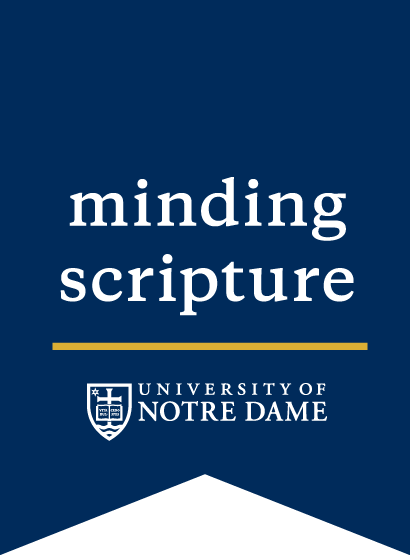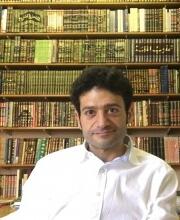Episode 14: Transmission of the Qur’an
While you might be aware of Islamic tradition regarding the revelation of the Qur’an to Muhammad by the angel Gabriel, have you ever wondered how it was recorded and transmitted? Did Muhammad write this divine message down, or did transmission take place via another method? In this episode, our hosts Gabriel Reynolds, Francesca Murphy, and Mun’im Sirry are joined by Professor Shady H. Nasser, associate professor of Arabic Studies at Harvard. Professor Nasser specializes in Near Eastern civilizations, linguistic studies, and transmission and reception of Qur’anic texts; he’ll provide his understanding of the variant readings which have arisen within Islamic tradition.
First, Professor Nasser turns to the question of how Islam approaches the revelation and recording process of the Qur’an. Mainstream tradition holds that the first revelation occurred when Gabriel read to Muhammad a divinely written scroll that contained the words of the Qur’an; the content of this scroll was then transmitted through oral recitation and partially through written records. Muhammad died before a written version of the Qur’an was codified; in fact, there was initial hesitancy to record the Qur’an in a written format. Instead of conceptualizing the Quran as a text that early Muslims copied and memorized, it is thus far more accurate to think of it as a revelation of sermons or verses which were taught by the Prophet and passed down.
This leads our hosts into the next question: why do variant readings of the Qur’an exist, and how does Islamic scholarship approach this fact? Nasser explains that the Qur’an can be understood as a living text: it is intended to be read aloud, which leads us to the phenomenon of variant reading styles and traditions. In classical sources, Professor Nasser explains, Imams or Sheikhs recited in ways people of the region were accustomed to, and, until the 10th century, there were dozens of variant readings of the Qur’an. The first successful codification of variants was accomplished by Abu Bakr Ibn Mujahid, who before his death in 936 AD selected the seven canonical readings now known as the Qira’at. These readings often involve varied pronunciations and accents, which can affect the declensions of words or the grammar of a sentence. However, variants usually do not indicate diverging theologies.
Eventually, Islamic tradition explained variants with a Hadīth by which the Qur’an was revealed in seven coequal modes. Nasser unpacks how that Hadīth can be understood, and how it has shaped the historical approach to codifying canonical readings, in the remainder of the episode.
Further Reading
- Shady H. Nasser, The Transmission of the Variant Readings of the Qur’ān: The Problem of Tawātur and the Emergence of Shawādhdh, Brill, 2012.
- Shady H. Nasser, “Revisiting Ibn Mujāhid’s Position on the Seven Canonical Readings: Ibn ʿĀmir’s Problematic Reading of kun fa-yakūna,” Journal of Qur’anic Studies 17.1 (2015): 85–113.
- “Qur’an Manuscripts and the History of the Qur’an,” an Interview with Eleonore Cellard, by Mehdi Azaiez, International Qur’anic Studies Association, 2013.
Featured Guest
Professor Shady H. Nasser teaches Arabic literature and Islamic Civilizations courses. He started his PhD at Harvard University in Arabic and Islamic studies under the supervision of Wolfhart Heinrichs.
Nasser’s research interest is Qur’anic studies in general with particular focus on the history of the transmission of the text, its language, and its reception among the early Muslim community.
Professor Shady H. Nasser
Associate Professor of Arabic and near eastern studies at harvard
IMAGE CREDIT: 12th Century Qur’an in Reza Abbasi Museum, January 1, 2012.

